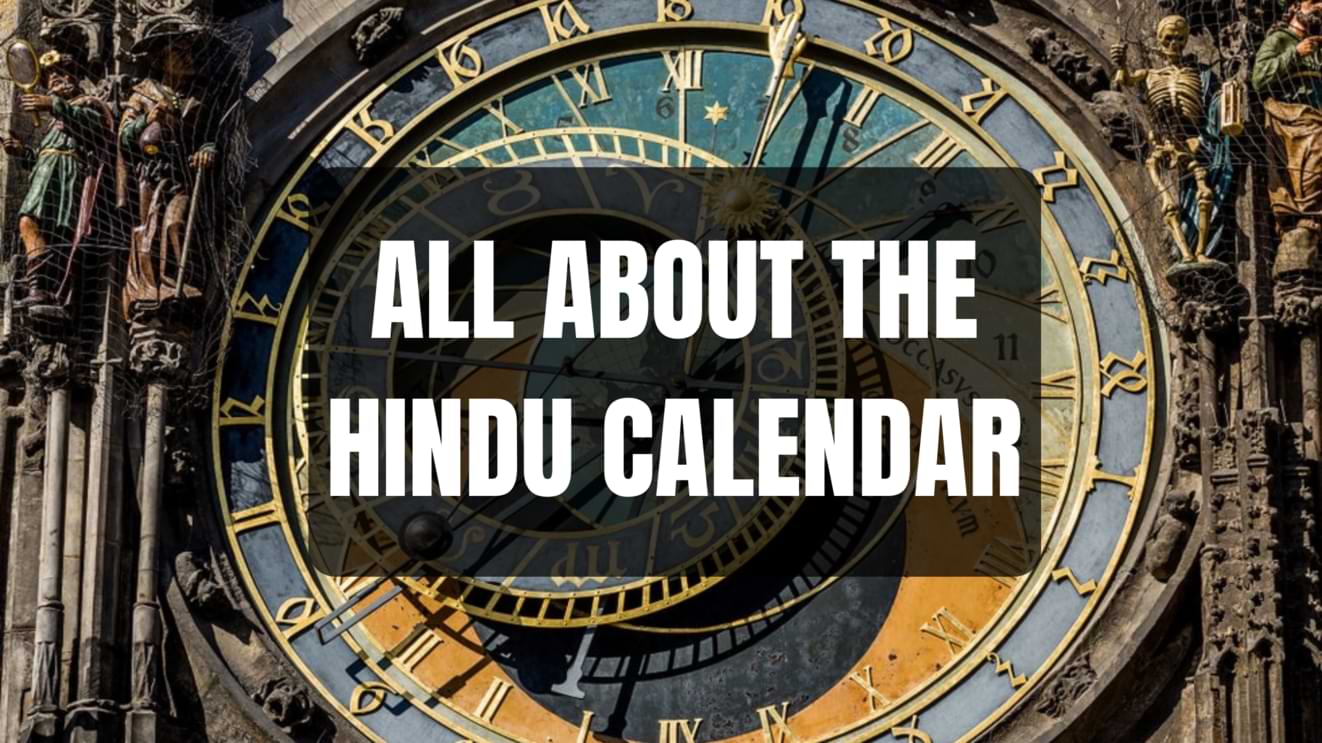What is the Hindu Calendar
The Hindu calendar is different from the Gregorian Calendar, which is the January to December calendar. This calendar is based solely on the Sun, that means the time the Earth takes to orbit the Sun once is known as a year. The Hindu Calendar is primarily based on the Moon but the Sun calendar is also kept in perspective. Formed thousands of years ago, by observation of the Sun and the Moon the Hindu calendar was formulated.
The Hindu Calendar is called ‘Panchang’ since Vedic time has been used to decide on dates of Hindu Festivals, auspicious times or ‘Muhurats’ for Puja and Yajna (for the Kings), time and date for marriages, other such significant events and for Astrological calculations, which played a very big role then and even now has importance.
The Hindu calendar follows the time it takes the Moon to orbit once around the Earth, which makes a month. Therefore, in the duration of the Earth making one complete orbit around the Sun (Gregorian calendar), the Moon takes 12 orbits around the Earth making it 12 months. The term Panchang or Panchanga is a Sanskrit word which means the five limbs’. Indicating the elements that go into making the Panchang, which are, the Tithi (which is the Lunar day), a certain angle of the Sun and Moon called Yoga, the nakshatra (constellation) the Moon is aligned with, the half-day or Karana and the Solar days of the week called Vasara or Vara.
The Hindu Panchang has 29 days or 29.5 days to be accurate, in a month. There are 354 days in a year as per the Lunar year which is about 11 days short of the Gregorian calendar’s 365 days in a year. Every two and a half to three years, the Hindu calendar adds an extra month to the year called the Adhik Maas. This is done in the adjustment of the 11 days, which have fallen short of the 365 days every year, as mentioned above. The Adhik Maas helps to keep the dates of all Hindu festivals in its place, as per the Solar Year and also the seasons. It is noteworthy that during the Adhik Maas, as per the Hindu Panchang, there are no festivals, religious ceremonies and even worship at temples is stopped.
The names of the months in the Hindu Calendar in sequence – Chaitra, Vaisakha, Jyeshtha, Ashadha, Shravana, Bhadra, Ashvin, Kartik, Agahana, Pausha, Magha, Phalguna.
The Hindu Month is divided into Shukla Paksha and the Krishna Paksha. The Shukla Paksha is the waxing Moon phase of 15 days (fortnight) when the Moon grows in size in the sky and Krishna Paksha is the fortnight of waning Moon phase when after the full Moon (Purnima), the Moon slowly diminishes in size. The days of the Hindu calendar are divided into Tithis, which have a scientific way of calculation. The Vedic Astronomers had knowledge that the Moon travelled in an elliptical pathway or orbit around the Earth, based on which they calculated the Titihis of the day.
The Hindu calendar is also called Vikram Samvat calendar, said to be followed by Northern states of India. Though most believe that the name of this calendar is given after King Vikramaditya, after he defeated the Sakas, there are many explanations, which go to say that this calendar existed from before, in the name of Krita/Malava and was re-named and other such theories. The Vikram Samvat year starts a couple of days post the festival of Diwali (Deepavali) in Gujarat and parts of Maharashtra. It is also the official calendar of Nepal.
The Saka Samvat or Saka Calendar is the official civil calendar of India, also called a Shalivahana Saka era or Mahasakkarat Era. It is quite similar to the Gregorian calendar and has 365 days, divided into 12 months. The Sak Samvat year starts from Chaitra, the date being 22nd March to be precise. In Gregorian leap years, the Saka Samvat starts from 21st March.
Some uses of the Hindu Calendar
- The Hindu calendar or Panchang is widely used by Vedic Astrologers, who do calculations for a Birth chart or Kundli and other important calculations, based on the Thithi, the Lunar cycles of the month etc.
- The dates, Muhurats and Tithis of Hindu Festivals like Holi, Diwali, Navratri etc., are decided by calculations of the Hindu Calendar.
- If you want to know an auspicious date or time of Marriage, to conduct a certain Puja/Yajna, the Pandit consults the Panchang to decide on it.
- The Gazette of India, together with the Gregorian Calendar uses the Hindu Panchang to decide on various dates.
- The time of planting crops in various seasons is also based in the Hindu Calendar.
- Seasons are based on the Hindu calendar, like, when approximately Monsoon should start and other such details.

